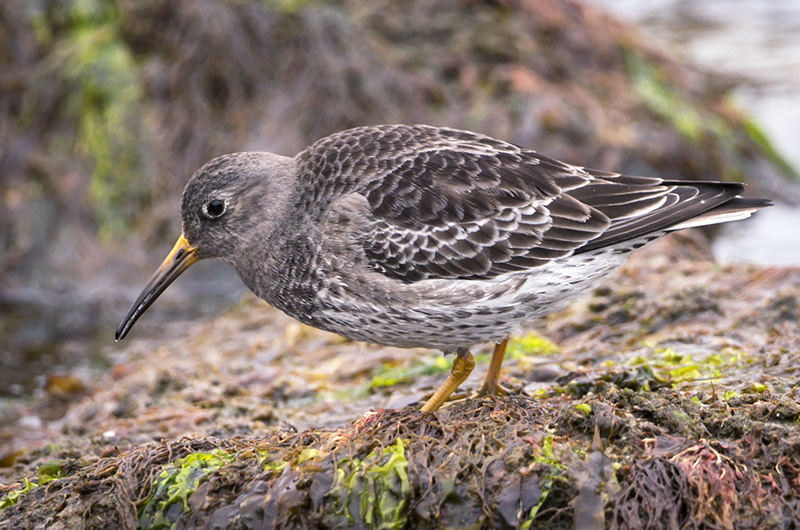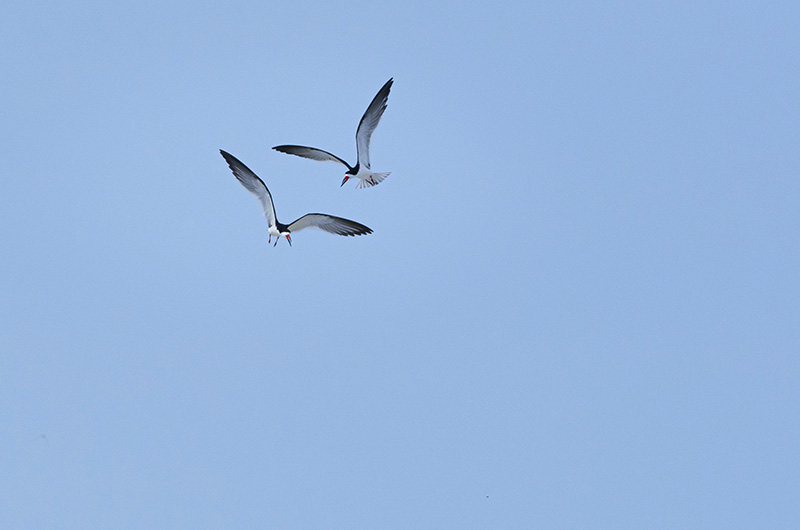As an especially active shorebird nesting season shapes up this year, the Trustees of Reservations has closed a wide swath of beach trails to over-sand vehicles from Edgartown to Chappaquiddick.
Little Beach, a barrier beach off Eel Pond in Edgartown — where there is no driving on the beach — is a particular hotspot, with more than 800 nests being reported this week.
Effective June 10, the Trustees closed a roughly four-mile stretch of barrier beach running from the westernmost part of Norton Point in Edgartown through Wasque Reservation and East Beach on Chappaquiddick.
Restrictions and closures are also in effect at Cape Pogue Wildlife Refuge near the gut, and on a small stretch of Leland Beach, the Trustees said.
Oversand vehicle access is still available onto East Beach at the Dike Bridge, although the only open route is north toward Cape Pogue, according to a map posted by the Trustees on its Facebook page.
To date there are 17 piping plover nests and 16 oyster catcher nests in the restricted areas, a good number of them near Norton Point.
Piping plovers, tiny migratory shorebirds that make their nests on sandy barrier beaches, are a state and federally listed threatened species.
Trustees beaches remain open to people on foot, but no dogs are allowed near the restricted areas. Shore fishermen can reach the beach at Wasque by parking at the gate house and walking down the steps at the fishermen’s access point.
The over-sand vehicle closures are expected to remain in place for at least four weeks or until the chicks fledge, according to Sam Hart, Islands director for the Trustees.
Mr. Hart said the restrictions are more extensive than in previous years. “We have had to close off a lot of beach,” Mr. Hart told the Gazette by phone Monday. “It is certainly a balance, conservation and access. We are trying to provide the community with the greatest amount of access possible, and appreciate their understanding and patience.”
Matt Pelikan, who leads the plover management program for the Trustees, said the increased nesting activity is a positive sign for the species. Last year there were just 11 active plover nests on Trustees properties.
“The statewide population seems to be increasing, so it probably is a reflection of a much broader trend,” Mr. Pelikan said. “They tend to be more concentrated on Norton Point and Leland Beach than they have been in recent years.”
He also said there was one active plover nest at Long Point Wildlife Refuge, a first in many years.
Luanne Johnson, a wildlife biologist and executive director of Biodiversity Works who manages beaches and monitors plover nests on private and some town properties around the Island, said her team is monitoring 31 active plover nests.
Areas under her supervision with active nests include the west side of Edgartown Great Pond, parts of the south shore in Edgartown, Lighthouse Beach and Eel Pond.
Little Beach at Eel Pond is literally flush with nesting shorebirds this year.
Rob Culbert, who writes the weekly bird news for the Gazette, reported in his column this week that there are some 800 nests at Little Beach including 400 least tern nests, 337 common terns, five plover nests, four oystercatcher nests, 11 black skimmer nests and one willet nest.
“Double these numbers to find there are over 1,500 birds present on Little Beach!” Mr. Culbert wrote.
And while the active nesting year is a good sign, Ms. Johnson said the fledge rate for plover chicks is still well below statewide management and recovery goals.
She said despite restricted vehicle access and other management tools, increasing numbers of predators, such as skunks and crows, continue to threaten piping plovers.
“Predator populations are abundant,” Ms. Johnson said. “Martha’s Vineyard has the lowest [plover] productivity of anywhere in the state, due to predators.”
BiodiversityWorks manages predation by deterrence and trapping, Ms. Johnson said. And the Trustees are launching a study this year, using trail cameras to track and analyze local predators, Mr. Hart said.
He also praised Island fishermen for pitching in to help protect the shorebirds, and said members of the Martha’s Vineyard Surfcasters Association had volunteered to help string corridor fencing along the restricted areas.
“We all get frustrated when we lose access to these special places,” Mr. Hart said. “That kind of cooperation is vital to our success.”
Mr. Pelikan urged beachgoers to exercise caution while walking near restricted areas, and advised anyone who sees a plover nest to give it a wide berth.
“If you see a chick, or even an adult bird, give them some space,” he said. “The less often they get disturbed the better they do, it’s really that simple . . . they seem to be doing pretty well so far.”










Comments (4)
Comments
Comment policy »